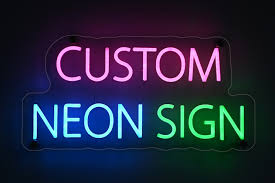In 2024, advertisers must evolve their strategies to stay competitive in a dynamic digital landscape. Effective demand generation is crucial for driving leads, nurturing prospects, and converting them into loyal customers. This article explores advanced demand generation strategies specifically tailored for the digital marketing and advertising sectors, with a focus on connected TV advertising and other emerging trends.
Understanding Demand Generation
Demand generation encompasses a range of marketing activities aimed at creating awareness and interest in a company’s products or services. It goes beyond mere lead generation by focusing on nurturing relationships and guiding prospects through the buyer’s journey. For advertisers, especially those involved in connected TV advertising and performance marketing, a robust demand generation strategy is essential.
Key Strategies for Effective Demand Generation
1. Leveraging Connected TV (CTV) Advertising
Connected TV (CTV) advertising is revolutionizing the way brands reach their audiences. With more consumers shifting from traditional TV to streaming services, advertisers have a unique opportunity to engage viewers in a non-intrusive manner.
- Targeted Advertising: Utilize the advanced targeting capabilities of CTV to reach specific demographics, interests, and behaviors.
- Interactive Ads: Create interactive ads that encourage viewers to engage with the content, leading to higher conversion rates.
- Data-Driven Insights: Leverage data analytics to measure ad performance and optimize campaigns in real-time.
2. Embracing Programmatic Advertising
Programmatic advertising automates the buying and selling of ad space, making the process more efficient and targeted.
- Real-Time Bidding (RTB): Use RTB to bid on ad impressions in real-time, ensuring your ads reach the right audience at the right time.
- Audience Segmentation: Segment your audience based on data insights to deliver personalized ad experiences.
- Cross-Device Targeting: Ensure your ads reach users across multiple devices, from desktops to mobile phones and smart TVs.
3. Content Marketing and SEO
High-quality content is the cornerstone of any demand generation strategy. By providing valuable and relevant content, advertisers can attract and retain a clearly defined audience.
- Blog Posts and Articles: Regularly publish informative articles and blog posts that address your audience’s pain points and interests.
- SEO Optimization: Optimize your content for search engines to increase visibility and drive organic traffic.
- Ebooks and Whitepapers: Offer in-depth resources that provide significant value to your prospects, establishing your brand as an industry authority.
4. Social Media Advertising
Social media platforms remain powerful tools for demand generation, offering extensive reach and precise targeting options.
- Platform-Specific Strategies: Tailor your advertising strategies for each social media platform, considering the unique features and user behaviors.
- Influencer Partnerships: Collaborate with influencers to extend your reach and build trust with their followers.
- Engaging Content: Create visually appealing and engaging content that encourages sharing and interaction.
5. Email Marketing and Automation
Email marketing continues to be a highly effective demand generation tool when executed correctly.
- Personalized Campaigns: Use data to personalize your email content, making it more relevant to each recipient.
- Marketing Automation: Implement automation to send timely and targeted emails based on user behavior and preferences.
- Nurture Sequences: Develop nurture sequences that guide prospects through the buyer’s journey with educational and persuasive content.
6. Utilizing OTT Advertising
Over-the-Top (OTT) advertising refers to delivering ads directly to viewers over the internet via streaming video services. This form of TV advertising offers a wealth of opportunities for targeted demand generation.
- Granular Targeting: Leverage the precise targeting capabilities of OTT platforms to reach specific viewer segments.
- Interactive Features: Use interactive ad formats to engage viewers and drive higher interaction rates.
- Performance Metrics: Track performance metrics to gain insights into viewer engagement and campaign effectiveness.
7. Data-Driven Decision Making
Data is at the heart of effective demand generation. By harnessing the power of data analytics, advertisers can make informed decisions that enhance campaign performance.
- Customer Insights: Gather and analyze customer data to understand behaviors, preferences, and pain points.
- Campaign Optimization: Continuously optimize your campaigns based on data insights to improve ROI.
- Predictive Analytics: Utilize predictive analytics to forecast trends and tailor your strategies accordingly.
8. Integrating AI and Machine Learning
Artificial Intelligence (AI) and Machine Learning (ML) are transforming demand generation by automating processes and providing deeper insights.
- Chatbots and Virtual Assistants: Deploy AI-powered chatbots to engage with prospects in real-time and guide them through the buyer’s journey.
- Predictive Targeting: Use ML algorithms to predict which prospects are most likely to convert and target them with personalized content.
- Content Creation: Leverage AI to generate content ideas and optimize existing content for better performance.
9. Events and Webinars
Hosting events and webinars can be a highly effective way to generate demand and build relationships with prospects.
- Virtual Events: With the rise of remote work, virtual events have become increasingly popular. They allow you to reach a global audience without the logistical challenges of in-person events.
- Expert Panels: Invite industry experts to participate in panels and discussions, adding credibility to your event.
- Interactive Sessions: Incorporate interactive elements such as Q&A sessions and polls to keep attendees engaged.
10. Partner and Affiliate Marketing
Collaborating with partners and affiliates can extend your reach and amplify your demand generation efforts.
- Strategic Partnerships: Form partnerships with complementary brands to co-promote products and services.
- Affiliate Programs: Develop affiliate programs to incentivize partners to promote your brand and drive conversions.
- Joint Campaigns: Execute joint marketing campaigns that leverage the strengths of both partners for maximum impact.
Conclusion
Demand generation in 2024 requires a multifaceted approach that leverages the latest technologies and trends in digital marketing. By integrating strategies like connected TV advertising, programmatic advertising, and data-driven decision making, advertisers can effectively attract, engage, and convert their target audiences. Stay ahead of the competition by continuously adapting and optimizing your demand generation strategies to meet the evolving needs of your audience.







Be First to Comment